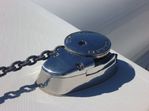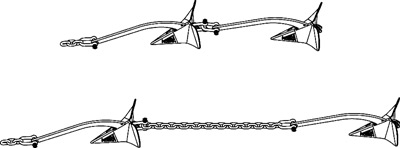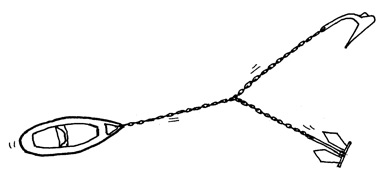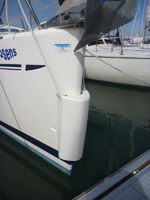Mooring
-
See advice
How does it work?
A windlass is a sort of large winch which provides the force necessary to raise the anchor. It is equipped with a gypsy, a toothed wheel designed to hold the chain. Attention; this gypsy must be adapted to the diameter of the chain. For raising the cable, the windlass must be equipped with a warping end; this may also be used as an electrical winch to raise a person to the top of the mast, or for pulling a rope. To facilitate the passage of the chain, today sprockets are mixed (they welcome the chain and block the rope.)
-
See advice
The Regulations and the second anchor
The regulations impose an anchor only on boats with more than 4 people aboard.In practice, it is necessary that all boats have an anchor on board. Other than the fact it permits foreign moorings, the anchor also helps deal with emergencies in bad weather (damaged engine or sails.) Even if the second anchor is not mandated by law, it is important to have one on board. The hold of an anchor depends on the bed (rocks, seaweed, sand…)we therefore strongly advise a second anchor, different from the first. The two anchors are thus complementary.The different types of anchors
Standard p -
See advice
Mooring techniques
In case of the risk of bad weather, it is wise to use a second anchor, to avoid coming loose. When using two anchors they must be of the same technology to work in the same fashion.
Backing an anchor. This consists of using two anchors. If the two do not work on the bottom, the first, closest the boat reduces the load on the rear permitting it to find a hold.
Forking. This amounts to placing two anchors in a v in front of the boat. The manoeuvre is delicate because it is necessary to raise the first anchor before disposing of the second.
-
See advice
All shapes
There are all forms of fender, the cylindrical, to the lens shaped, through to flat and round… Faced with this range, it is often difficult to make a choice and it is tempting, to take a selection, but the cylinders are undoubtedly the most effective.
Boat length Fender diameter Fender Number Supplementary
Round fenders
4 to 6 m 10 to 12 cm 6 15 to 20 cm
6 to 8 m 15 to 20 cm 8 28 cm
8 to10 m 20 to 25 cm 8 35 cm
10 to 14 m 25 to 35 cm 10 45 cm
